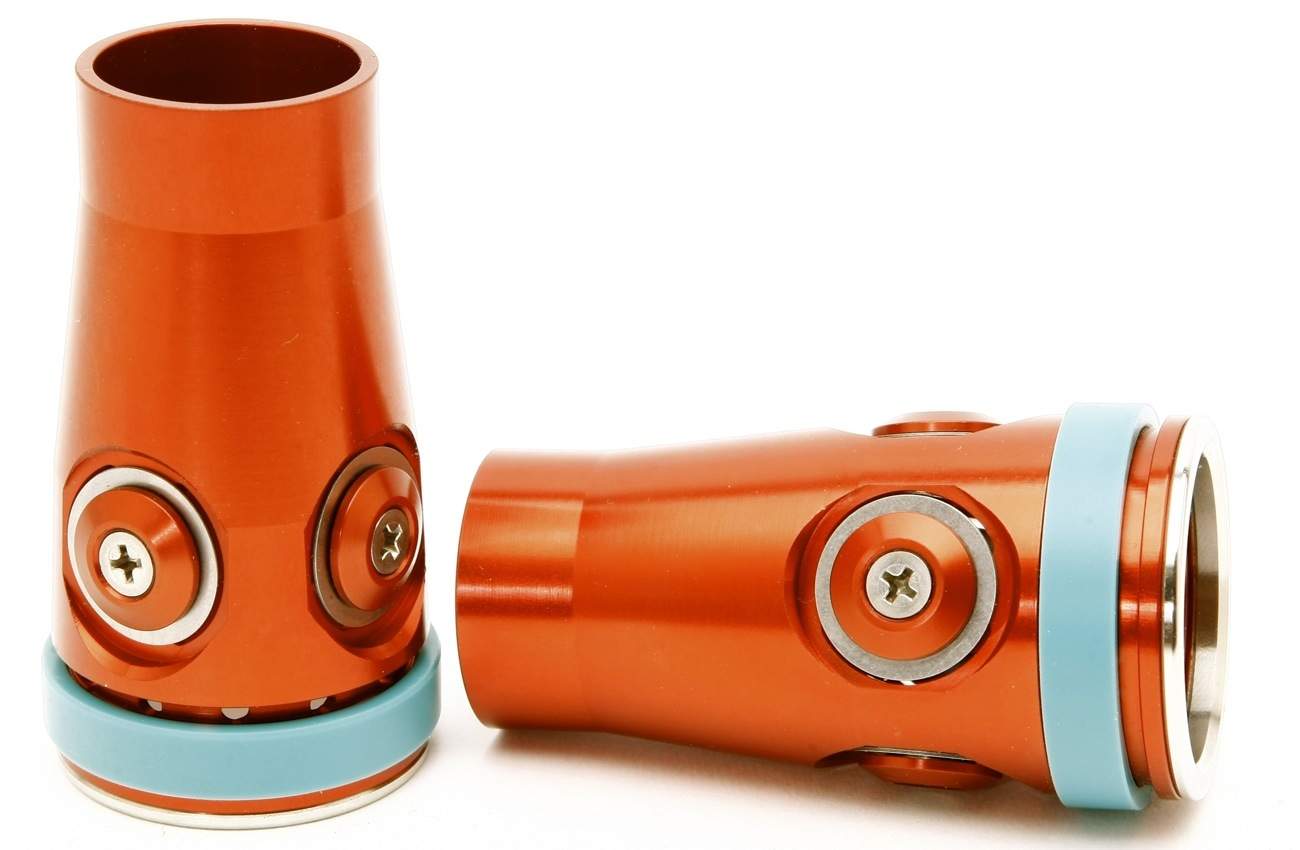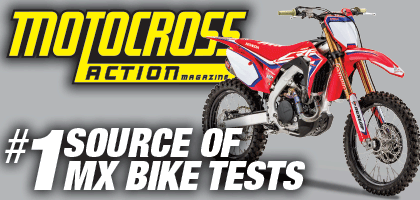MXA TEAM TESTED: RIDE JBI PRO PERCH FORK MOD
WHAT IS IT? The Ride JBI Pro Perch, designed by J.B. Covington, is a high-performance replacement spring seat for KYB, Showa and WP twin-chamber forks. It utilizes reed valve-style shims to create a variable port area to provide plushness in the initial part of the stroke and better bottoming resistance than a stock spring seat.
WHAT’S IT COST? $350.00.
CONTACT? www.ridejbi.com or (480) 269-5585.
WHAT STANDS OUT? Here’s a list of things that stand out with the Ride JBI Pro Perch.
(1) J.B. Covington. The MXA wrecking crew loves testing products of ingenuity, particularly from creative individuals who want to make a difference. Ride JBI’s J.B. Covington is one such person. The 27-year-old realized his calling when he began working on his own bike. Covington dissected every facet of his suspension and discovered that he could improve the parts. The Ride JBI Pro Perch is the fruit of his labor.
 Ride JBI (left) and stocker (right).
Ride JBI (left) and stocker (right).

(2) Spring perch. The objective of a fork spring seat is to flow oil at a specific rate through the fork leg. The rate at which the oil flows depends on the spring seat’s orifice sizes. Kayaba, Showa and WP twin-chamber spring seats have different openings per each manufacturer’s wishes. For example, KTM’s WP spring seat (gray, shown in photo above) has large ports in order to flow a considerable amount of oil. Although great for bottoming resistance, it fails to offer plushness in the initial part of the stroke. A conventional fixed port shape performs optimally at only one certain fork pressure. A spring seat with small port openings is most effective when riding at low speed over small chatter bumps. Once the rate of speed quickens, more oil needs to be flowed through the spring perch, but small port openings restrict oil and prevent the fork from bottoming.
(3) Design. Ride JBI developed a pressure-sensitive spring seat. Covington accomplished a variable port area by using shims that open and close based on oil pressure caused by fork compression. At low speed, the four shims open slowly to provide a plush feel at the top of the fork stroke. During heavy impact, the oil forces the shims to open excessively, which equates to better bottoming resistance. The perch valving isn’t intended to be adjusted, although Ride JBI can customize the spring perch shims to your liking.
(4) Installation. It will take a competent mechanic to install the JBI Pro Perch. Are you up to the task? If you can change your fork seals, then don’t be fearful of installing the JBI Pro Perch. Their website provides detailed installation instructions along with photographs. Worst-case scenario, you’ll need to pay a licensed mechanic at your local motorcycle dealer to get the job done.
(5) Performance. J.B. Covington suggested that we test the Ride JBI Pro Perch on a 2014 Honda CRF250. In stock trim, the CRF250 Showa forks are too soft for heavier and faster riders. The stock forks blow through their stroke with ease. During testing, we had to raise the oil height and crank in the clickers to alleviate the problem. Those maladies were mostly alleviated once the Pro Perch was installed. We were very pleased with the performance. The forks were plush over small bumps, held up better through the stroke, and managed to maintain excellent bottoming resistance during big impacts. More impressive is that we didn’t need to run extra fork oil, stiffer springs or max out the compression clickers. Instead, we could run settings similar to what Honda intended, yet the forks worked significantly better than they did off the showroom floor. We would love to try the Ride JBI Pro Perch on KTM WP forks, which are known for having mid-stroke harshness.
WHAT’S THE SQUAWK? Installing the Ride JBI Pro Perch is unnerving for an inexperienced mechanic. If that means you, then have a professional install the Pro Perch.







Comments are closed.